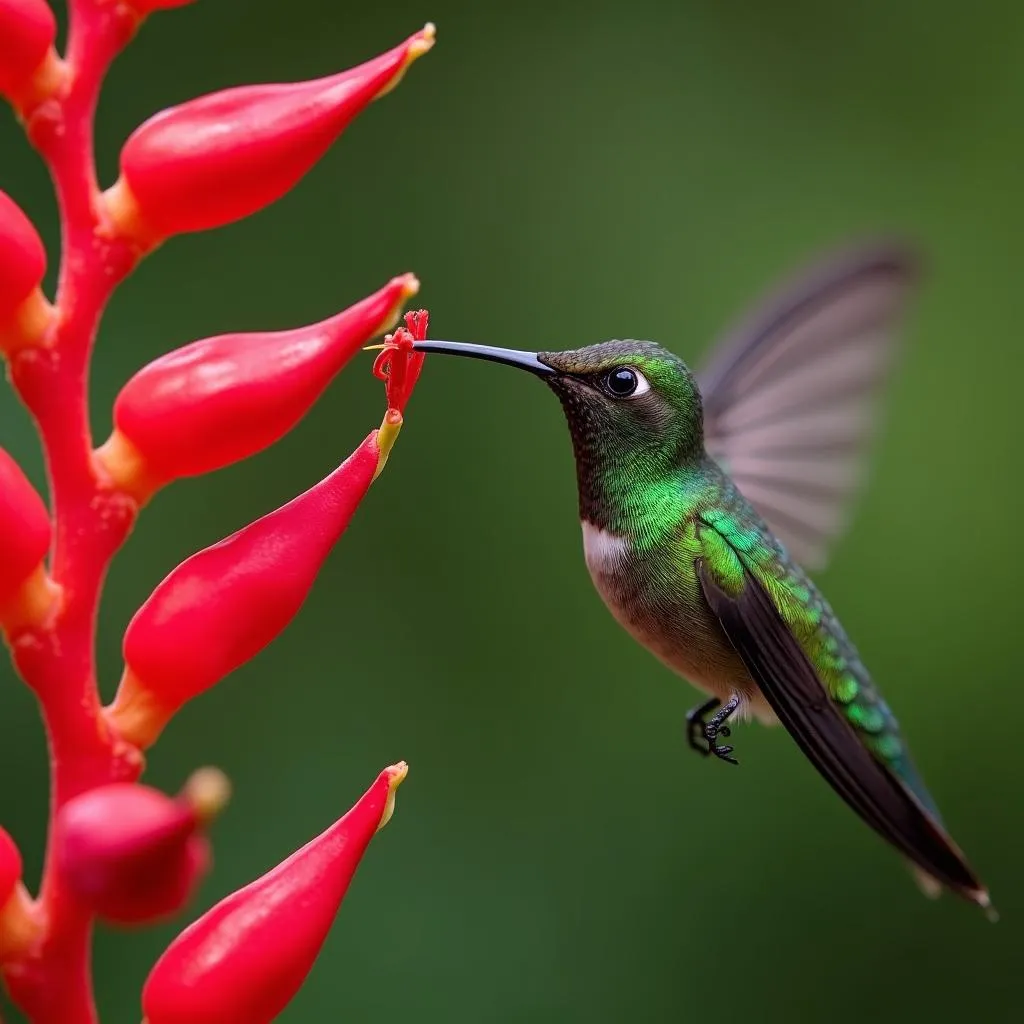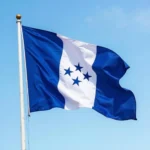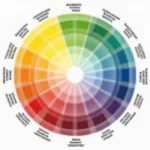Hummingbirds, those tiny, iridescent jewels of the avian world, are renowned for their love of nectar. But have you ever wondered if these flying wonders have a favorite color? While hummingbirds can see a wide spectrum of colors, certain hues seem to be particularly attractive to them, influencing their feeding habits and preferences. Let’s delve into the fascinating world of hummingbird vision and uncover the colors that make these little dynamos flock to your garden.
The Science Behind Hummingbird Vision
Hummingbirds, like humans, possess tetrachromatic vision. This means their eyes have four types of color receptors, or cones, compared to our three. This extra cone allows them to perceive ultraviolet light, a spectrum invisible to the human eye. This enhanced color vision gives hummingbirds a distinct advantage in spotting nectar-rich flowers, which often reflect ultraviolet light, even from a distance.
Red: A Beacon of Attraction
While hummingbirds can see a wide array of colors, red stands out as a particularly strong attractant. This is not necessarily because red appears brighter or more vibrant to them, but rather due to a combination of factors:
- Association with Food: Red is often associated with flowers that produce large quantities of nectar, a hummingbird’s primary food source.
- Visibility: Red flowers tend to stand out against the green foliage, making them easily visible to hummingbirds in flight.
- Learned Behavior: Hummingbirds may learn to associate the color red with a rewarding meal, leading them to seek out red flowers more frequently.
Beyond Red: Exploring Other Appealing Hues
While red reigns supreme, hummingbirds are far from being limited to a single color preference. They are attracted to a variety of bright, vibrant colors, including:
- Orange: Many orange flowers are highly attractive to hummingbirds, offering a similar visual appeal to red blooms.
- Yellow: Yellow flowers, though less common among hummingbird favorites, can still be a valuable nectar source.
- Pink: Pink flowers, often a softer shade of red, can be equally alluring to these tiny birds.
- Purple: Purple flowers, particularly those with a reddish hue, can also attract hummingbirds.
 Hummingbird Sipping Nectar from Red Flower
Hummingbird Sipping Nectar from Red Flower
Colors to Avoid
While bright, warm colors attract hummingbirds, some hues are less appealing and may even deter them:
- Blue: Blue flowers are less attractive to hummingbirds and are often associated with lower nectar content.
- Green: As the color of foliage, green blends into the background and doesn’t signal a food source to hummingbirds.
- Brown: Brown, often associated with decay, is not a color that attracts hummingbirds.
The Role of Flower Shape and Scent
While color plays a crucial role in attracting hummingbirds, it’s not the only factor influencing their preferences.
- Flower Shape: Hummingbirds are particularly drawn to tubular flowers, which are perfectly suited to their long, slender beaks.
- Scent: While hummingbirds don’t have a highly developed sense of smell, some flowers that attract them emit a sweet fragrance.
 Different Types of Hummingbird Feeders
Different Types of Hummingbird Feeders
Attracting Hummingbirds to Your Garden
To create a hummingbird haven in your own backyard, consider these tips:
- Plant a Variety of Flowers: Choose a mix of red, orange, pink, and purple flowers that bloom throughout the growing season.
- Provide a Water Source: Hummingbirds need water for drinking and bathing. A shallow birdbath or a mister will suffice.
- Avoid Pesticides: Pesticides can be harmful to hummingbirds. Opt for natural pest control methods instead.
Conclusion
Understanding what colors hummingbirds like can help you create a vibrant and welcoming habitat for these fascinating creatures. By incorporating a variety of brightly colored flowers, especially those in shades of red, orange, and pink, you can provide a welcoming haven for hummingbirds to enjoy throughout the year. Remember, a hummingbird-friendly garden is not just a feast for the eyes; it’s a vital source of sustenance for these remarkable birds.

